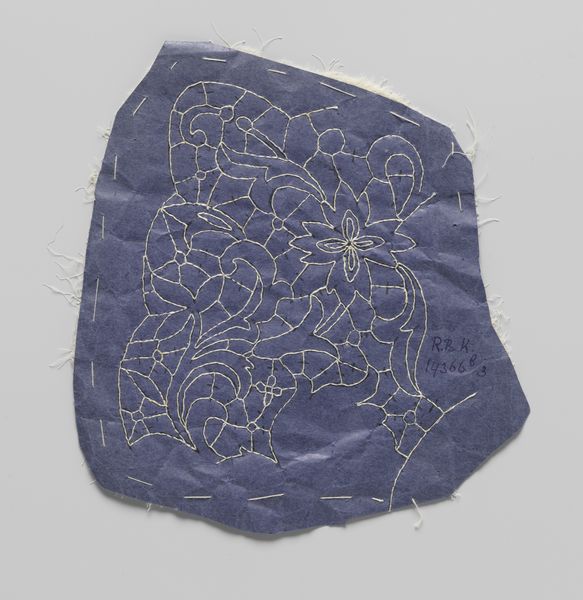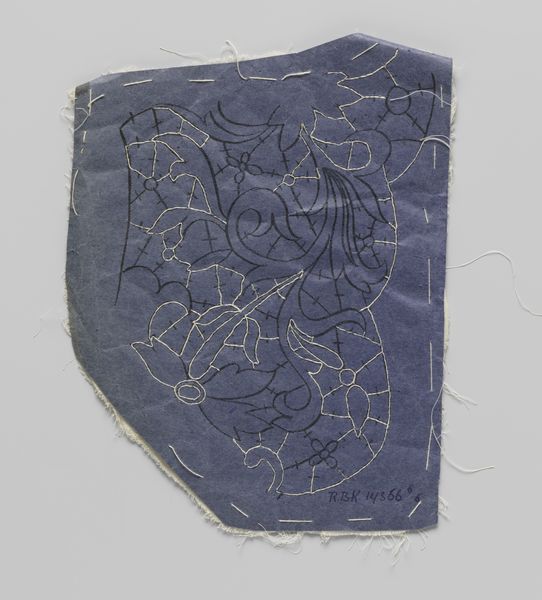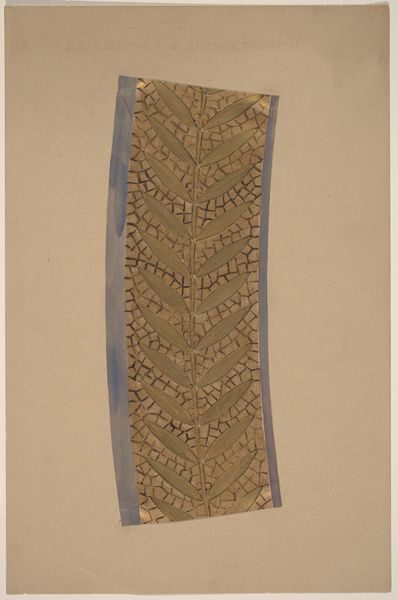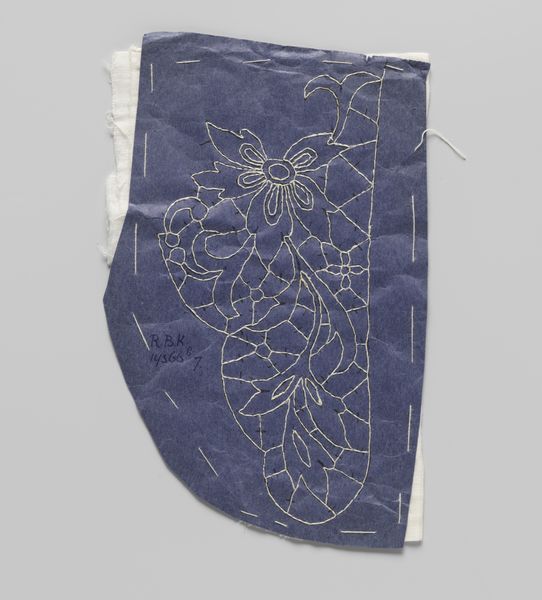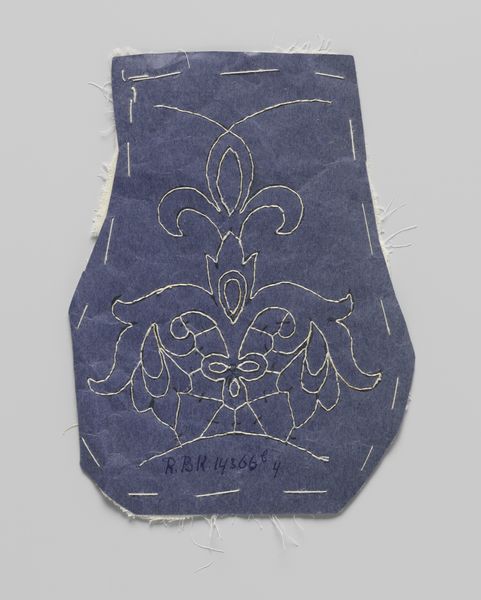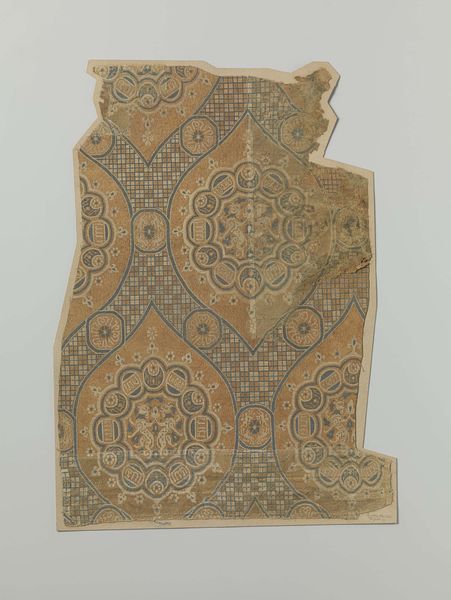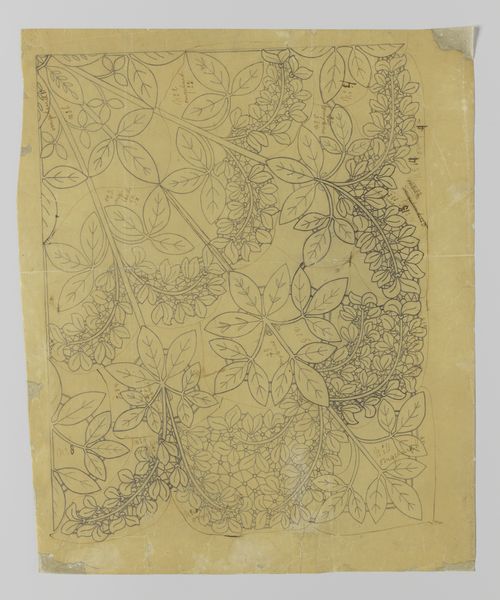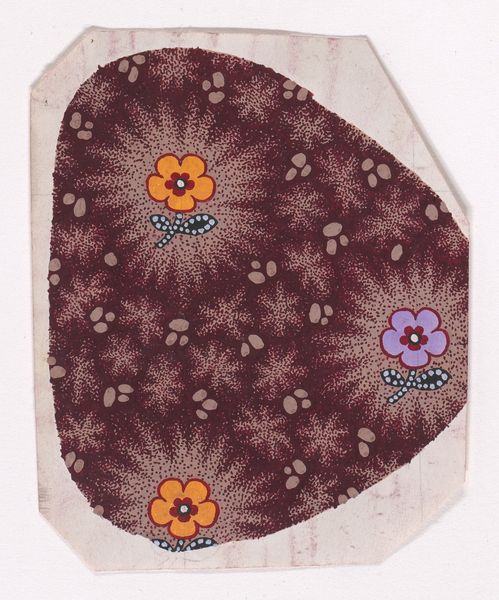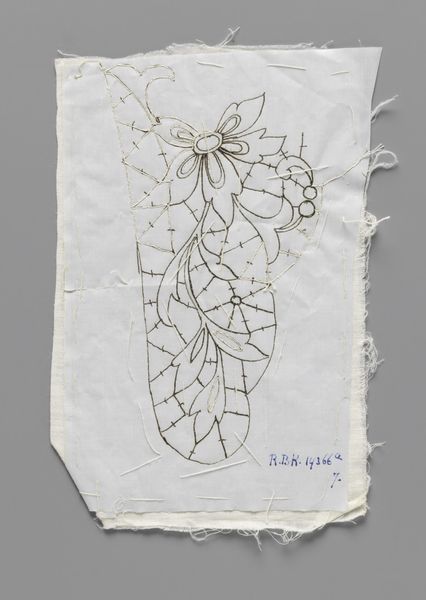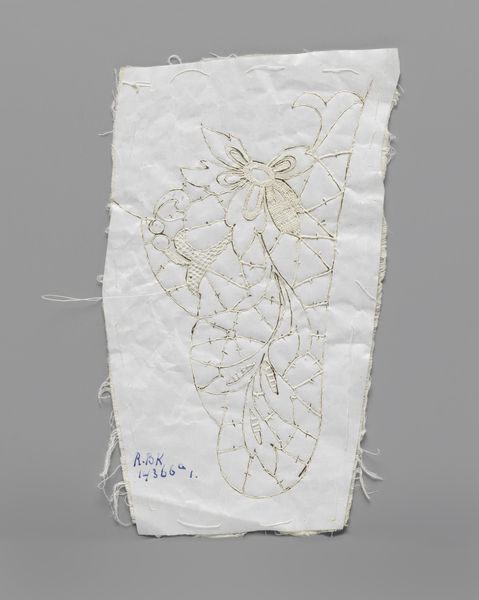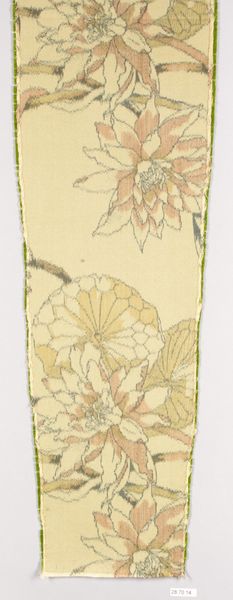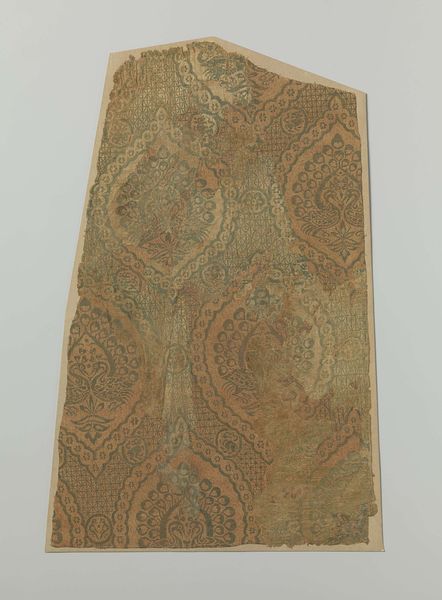
Prikking vastgeregen op een dubbele lap katoen en met traceerdraden voor het maken van een deel van een kraag van naaldkant c. 1915s
0:00
0:00
drawing, fibre-art, textile
#
drawing
#
fibre-art
#
textile
#
hand-embroidered
#
embroidery
#
fabric design
Dimensions: height 24.5 cm, width 18 cm
Copyright: Rijks Museum: Open Domain
This pattern, pricked and sewn onto cotton, was made by a Belgian internee in Amersfoort, at Village Elisabeth. It’s a template for needle lace, a demanding technique that requires immense patience. The floral design is plotted out with meticulous stitches. Notice the small perforations, pricked into the blue cotton – these would have served as guides for the lacemaker, dictating where the needle should go. Needle lace stands apart from other lace-making methods, as it is built up stitch-by-stitch without any backing fabric. It’s pure structure, born of skillful labor. Making needle lace is very labor-intensive, and this explains why it was always a luxury good. It was coveted by the upper classes for clothing and decoration. This pattern gives us insight into that world, but also into the experience of the maker herself, displaced from her home, and finding solace in the slow, repetitive work of lace making. So, next time you see a piece of lace, remember the time and skill woven into its very fabric, a testament to human ingenuity and perseverance.
Comments
No comments
Be the first to comment and join the conversation on the ultimate creative platform.
